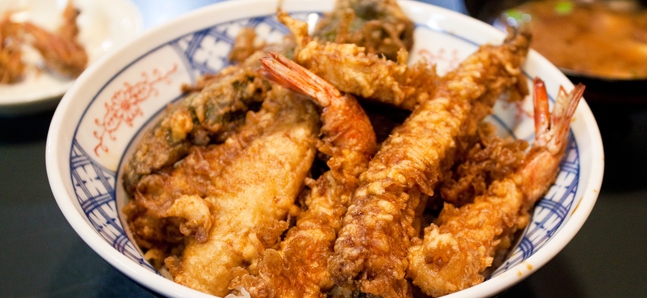
Posted: Thu Aug 14 2014
An all-time favourite of Japanese gourmands, tempura over rice (tendon) is said to have originated in the 1830s, and has played a central role in local food culture ever since. Although rather calorie-packed, the tempura served at speciality joints is usually fried in sesame oil, which actually contains cholesterol-lowering linoleic acids, oleic acids and the anti-oxidant sesamin, making it just a little more defensible in terms of health effects. Here are our picks of the top 15 restaurants serving top-of-the-line tendon, ranging from the dirt-cheap to the costly.
Tempura Nakasei
Tempura restaurants are dime a dozen in touristy Asakusa, but not exactly all of them meet the quality of their prices. Tempura Nakasei, established in 1870, is a different breed, known for its kakiage-don (¥2,625) that comes topped with crispy prawns and clam kakiage. Featuring a garden with carps swimming in the pond, the atmosphere here is almost like that of a traditional ryotei restaurant.
Yanagibashi Daikokuya
Daikokuya is a long-running, reservations-only joint located near the estuary where the Kanda River meets the Sumida River. Even at lunchtime, you can enjoy the made-to-order tempura bowl (¥2,000) at the counter, which provides nice views of the chef preparing your meal. In addition to the jumbo prawns, the set also includes the crunchy kakiage, made of prawns, clams and lotus root, as well as seasonal vegetables such as broccoli (winter) and wild herbs (spring). The rich, savoury sauce also enhances the flavour.
Dote no Iseya
First founded in 1889, this retro restaurant serves tempura over rice in three types, all with different toppings: the choices are I (¥1,400), Ro (¥1,900), and Ha (¥2,300). On your first visit, we recommend the Ro or Ha, which include eel and toppings like two jumbo prawns, vegetables and kakiage, cooked with a mixture of sardines, prawns and shellfish. The batter is crispy but fluffy, and the sauce offers a good balance of sweet and salty. Long queues are to be expected during the weekends, so going early on a weekday is recommended.
Tempura Nakayama
The tempura bowl (¥1,050) at Tempura Nakayama in Ningyocho is also known as the ‘black tendon’. This name is obviously inspired by the colour of the tempura, which can even be a tad shocking for first-time visitors. Toppings include prawns, Japanese whiting, eel and sliced carrots. The sauce, the recipe for which has been passed down since the restaurant was first established, has a rich flavour with a delicious soy sauce aroma. The taste isn’t as strong as it looks, but rather light and easy on the stomach.
Tenoto
Operating in Ningyocho for three generations, Tenoto serves three types of tendon: Chu (¥1,400), Jo (¥2,300) and Tokujo (¥3,200), with the Jo clearly providing the best value. Made with only the purest sesame oil and fresh ingredients delivered every day, the tempura’s sweet aroma wafts out when you lift the lid. The voluminous toppings include jumbo prawns, eel, Japanese whiting, lotus root and kakiage.
Kaneko Hannosuke
Make sure you have a couple of hours to spare if you plan to visit this classic Nihonbashi spot, as you are bound to have to wait to get inside. But the one single dish on the menu is well worth it – a sizeable bowl packed with mainly seafood tempura and topped with an egg, all for the low price of ¥880.
Fukamachi
The Michelin-starred Fukamachi serves the delectable Tokusei Kakiage Tendon (¥2,500), which contains lily bulbs, Japanese scallops and prawns, as well as seasonal vegetables like broad beans. The tempura is fried in freshly pressed, unroasted sesame oil, giving a satisfying crunch with each bite, whereas the sauce has a rich flavour and is best poured in ample quantities in order for some of it to seep through to the rice underneath. For a nice complement to the main dish, try the red miso soup, which contains plenty of shijimi clams.
Tempura Kurokawa
Kurokawa may be located near the very end of Tsukiji's outer market, but that doesn’t stop people from queueing up. The secret behind its popularity is without a doubt the fresh seafood supplied from the market every morning, while the vegetables are sent in directly from farms in Chiba. The lunchtime bowls are all priced at ¥1,500, but we recommend the scallop and prawn kakiage tendon, topped with sweet sauce.
Tempura Katsumi
Only catering to a maximum of 10 people at the counter, Kamiyacho's Tempura Katsumi sees a sizeable crowd of businessmen queued up around noon. Their basic bowl (¥1,300) features a mountain of prawns, Japanese whiting, eel and vegetables including eggplant and okra, all placed around the kakiage. The freshly fried tempura is given a quick dip in sweet sauce in order for the batter to retain its crunchy texture. It comes with quite a serving of rice, so small eaters might want to make their case when ordering.
Tenshige
Now run by the second generation of owners, Tenshige is an Akasaka classic. There are two types of bowls available at lunch time, the regular tendon and the kakiage (¥1,300 each), but almost everyone goes for the latter. The simple mixture of prawns and shellfish is wrapped in fluffy batter with a soft texture, while the yuzu peel on top adds accent to the rich sauce. Don't forget to order the red miso soup (¥100), too.
Momose
At Kudanshita's Momose, make sure to order the anago baraage-don (¥1,260), which comes with tempura conger eel. The crispy eel is cut into bite-size pieces and heaped up with plenty of shiso leaf, while the rice is covered in layers of seaweed with sesame and flavoured with a touch of special sauce. Extra sauce and Japanese pepper are placed on the side, allowing you to customise freely. Note that as you will have to queue up for lunch, it's best to arrive promptly around opening time.
Tensen
Tensen in Edogawabashi attracts crowds with its reasonable prices and high-quality fare. The Tokusei bowl (¥1,600) is loaded with prawns, eel, Japanese whiting and vegetables, as well as thick shiitake mushrooms stuffed with shrimp dumplings. The batter is thick and chewy but not too oily, while the piece of yuzu peel on top seals the deal.
Tenkou
Kagurazaka's Tenkou is a luxury spot where dinner courses start from ¥16,000. It takes a little courage to step through the doors, but doing so comes with quite a reward at lunchtime. Their tempura bowl (¥2,500) is topped with two prawns, prawn kakiage and Japanese whiting, as well as vegetables such as lotus root, sweet potato and green pepper. The delicately thin batter is light yet fluffy, and the moderately sweet sauce has a refined flavour. For peace, quiet and great food, this should be your stop.
Miyakawa
You'll have to walk a good ten minutes from Omotesando Station to find this small shop specialising in Kansai-style offerings, meaning lighter and milder tempura goodies fried in sunflower oil (instead of the sesame version used in Kanto tempura). The trip's well worth it, however, as portions are satisfyingly sized and made with the strictest attention to detail. Try the jo-tendon (¥1,800), a lunch favourite that consists of veg like onion, sweet potato and zucchini, in addition to seafood like shrimp and squid, all served over rice. Unlike most tendon of similar size, this one won't weigh you down and leaves a pleasant, fresh aftertaste.
Tsunahachi
Founded in 1924, Tsunahachi now has locations all over Tokyo, but continues to operate its original Shinjuku shop in these old-school, battered wooden premises. The standard bowl (¥2,100), available only on weekdays, is topped with two prawns, prawn kakiage, thick eel cuts and a selection of vegetables, while the batter is thick with a crunchy texture. The whole place is filled with the whiff of cooking oil, but the food is perfectly good enough for everyday fare.
Tweets
- About Us |
- Work for Time Out |
- Send us info |
- Advertising |
- Mobile edition |
- Terms & Conditions |
- Privacy policy |
- Contact Us
Copyright © 2014 Time Out Tokyo

























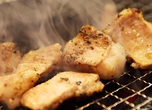


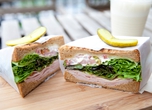

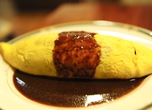

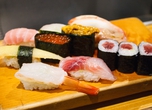
Add your comment